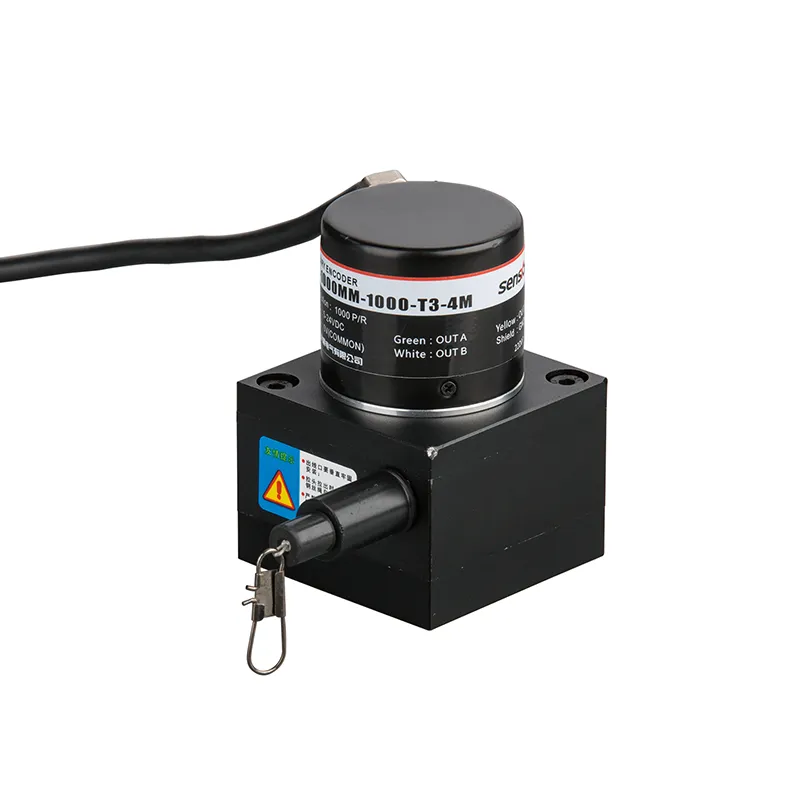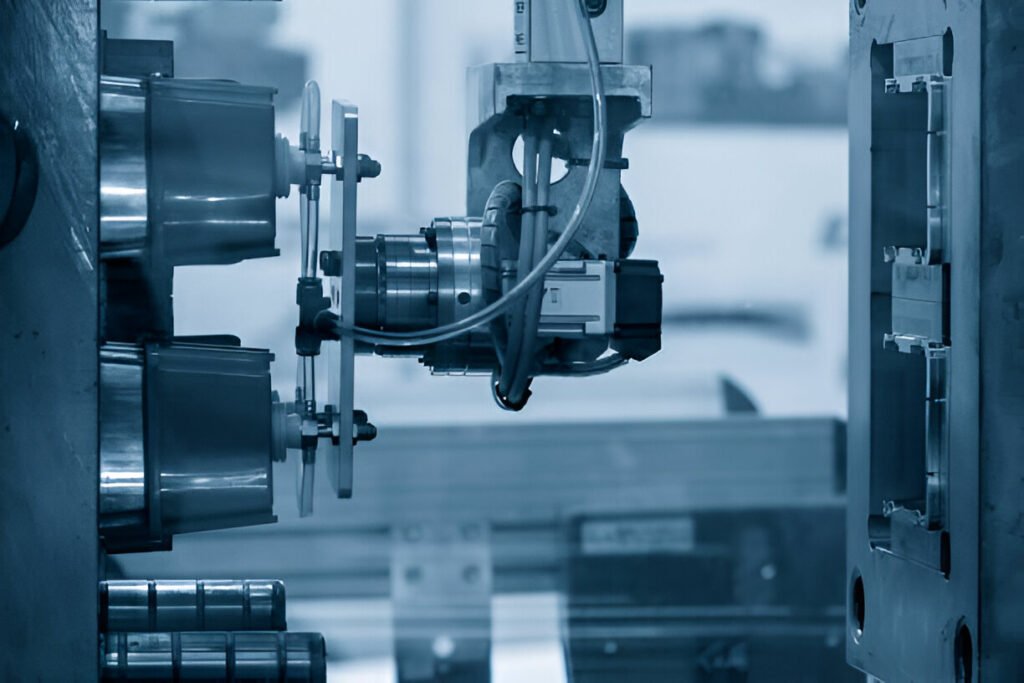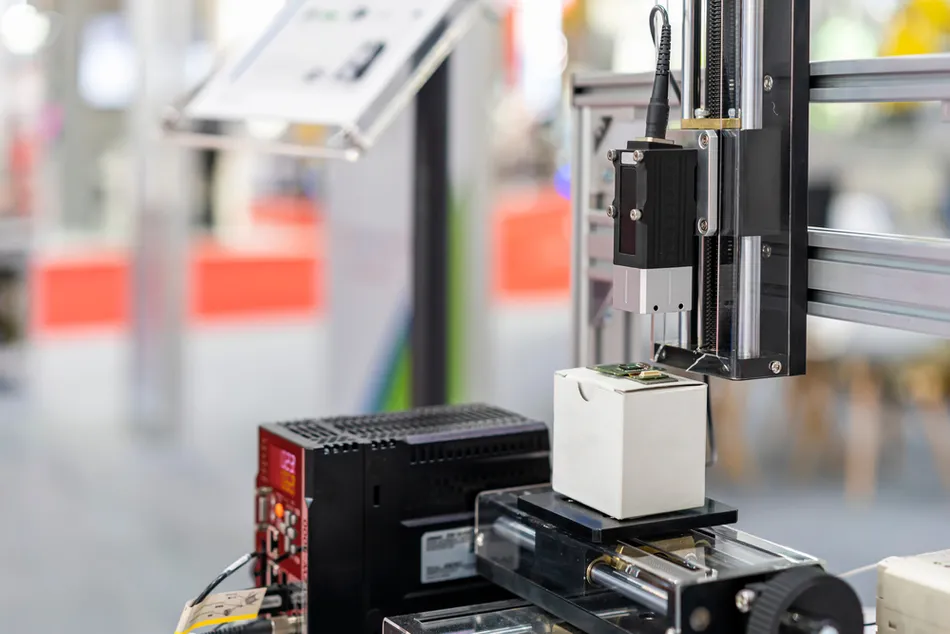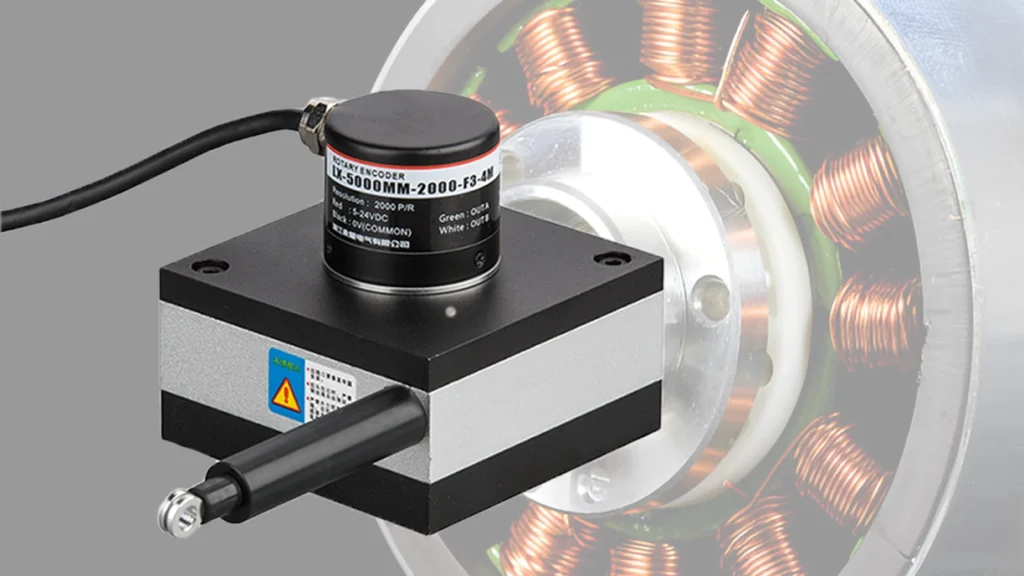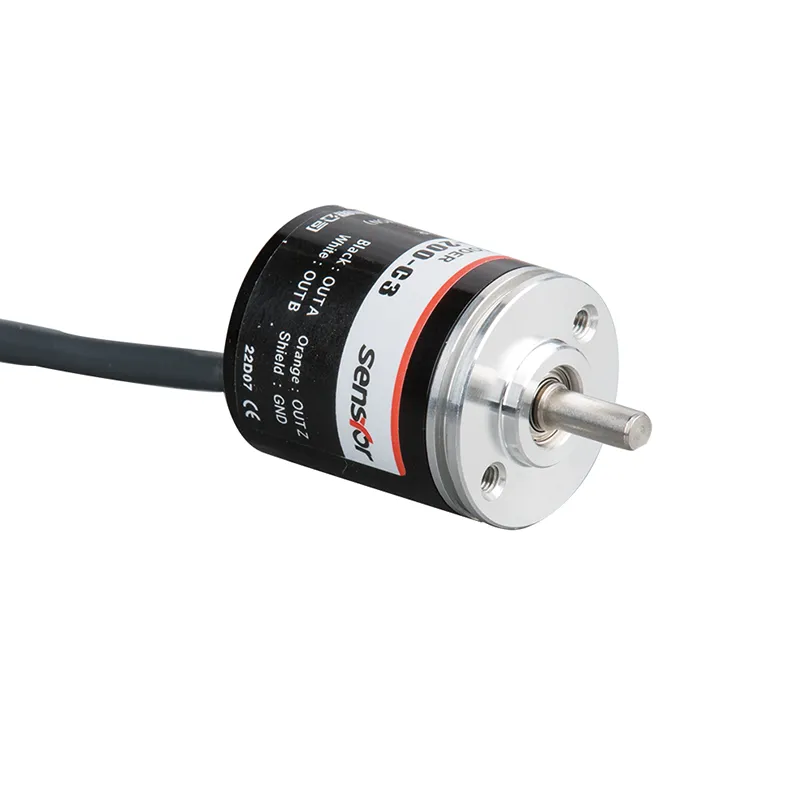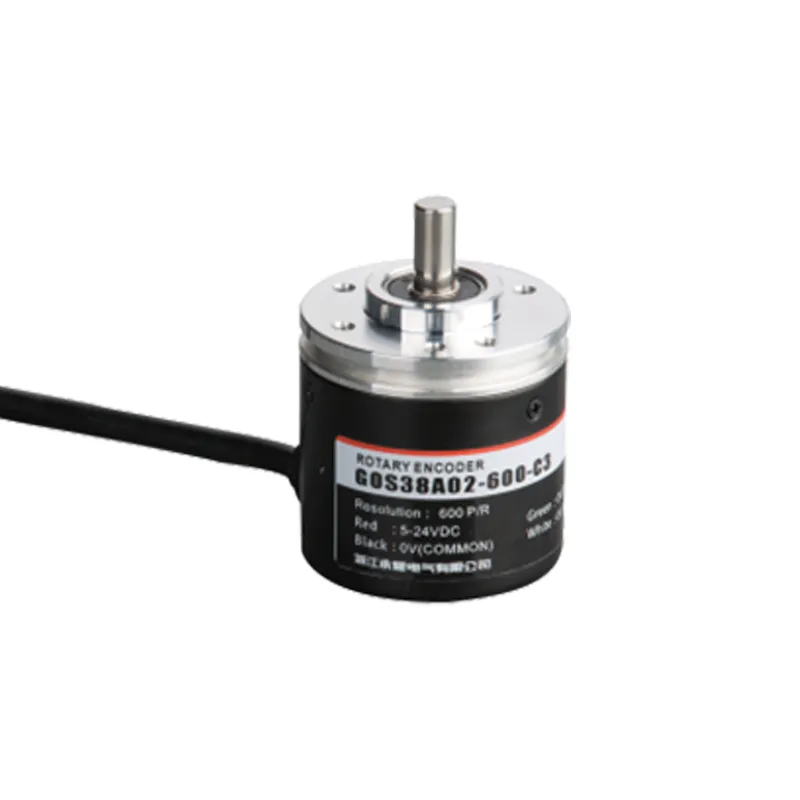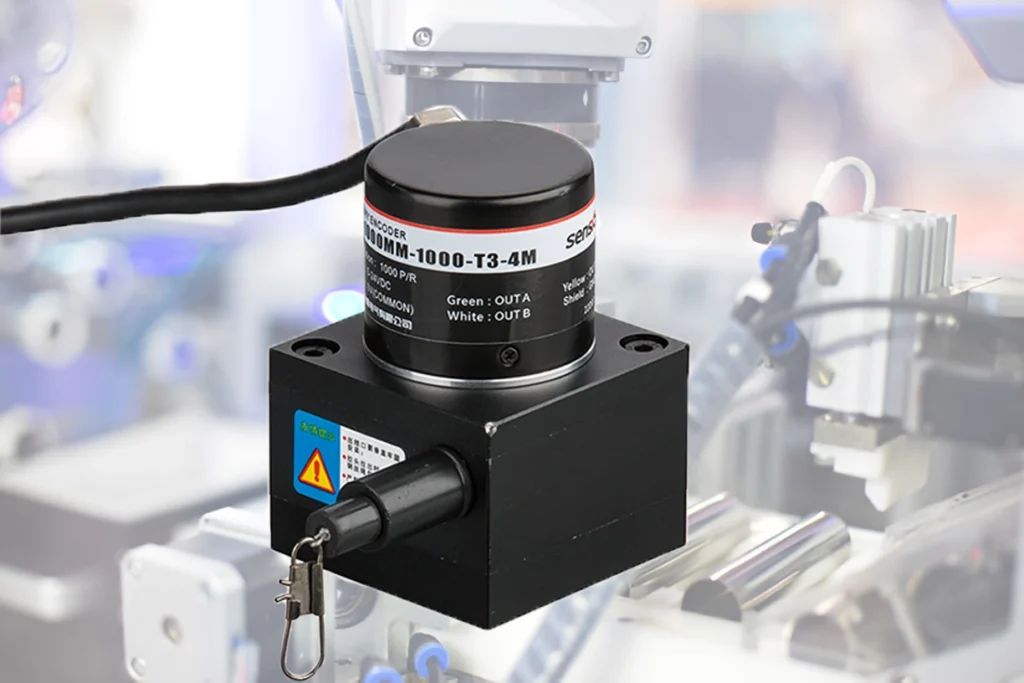
Linear Encoder A Comprehensive Guide
Have you ever wondered how machines know their exact position in space? That’s where the linear encoder steps in. Whether it’s in CNC machines, automated production lines, or robotics, linear encoders play an indispensable role. They are measuring devices that convert an object’s linear movement into electronic signals, enabling precise position monitoring and control.
In this article, we will take a deep dive into what linear encoders are, how they work, their types, key performance parameters, application fields, advantages and challenges, plus the latest technology trends. We’ll also guide you on how to choose and maintain one. Let’s explore together!
What is a Linear Encoder?
A linear encoder is a type of sensor or sensing device used for measuring linear displacement. It converts the linear movement of an object into electrical signals for reading and control purposes. Unlike rotary encoders, linear encoders focus on position changes along a straight line.
| Feature | Description |
|---|---|
| Measurement type | Linear displacement measurement |
| Main components | Scale and readhead |
| Output | Analog or digital signals |
| Typical applications | CNC machines, robotics, 3D printers, automation equipment |
The core function of a linear encoder is to electronically convert an object’s movement along a linear axis into positional information—kind of like a ruler with a pointer, but in an electronic form.
How Does a Linear Encoder Work?
You may wonder: how exactly does a linear encoder detect the object’s location? It basically depends on two key parts:
- Scale: Fixed along the motion path, featuring repeated specific markings, such as optical stripes, magnetic poles, or capacitive electrodes.
- Readhead: Mounted on the moving part, sliding along the scale and reading its markings in real-time to calculate position.
In simple terms, the readhead senses physical changes on the scale (like light passing through stripes or magnetic field variations) and converts those into electronic signals.
| Component | Function | Working Principle Example |
|---|---|---|
| Scale | Provides periodic physical marks | Optical stripes, magnetic marks |
| Readhead | Reads information and outputs signals | Photodetectors sensing light changes; Hall sensors detecting magnetic fields |
A simple analogy: the scale is like subway tracks, and the readhead is like the subway wheels. Each time the wheels pass a track mark, the sensor sends a signal. Counting these signals and their frequency tells the system the position and speed of the carriage (or part).
Two main feedback types:
- Incremental encoders: Calculate movement by counting pulses between positions.
- Absolute encoders: Each position on the scale has a unique code, so the system immediately knows the exact position—even after power loss.
Common types of encoder
Linear encoders are classified based on sensing principles, each with unique advantages and suitable scenarios:
| Type | Principle & Features | Suitable Applications |
|---|---|---|
| Optical Encoder | Uses LED light and photodetectors, offering very high resolution | Semiconductor manufacturing, precision CNC |
| Magnetic Encoder | Employs Hall effect sensors to detect magnetic field changes, resistant to dust & oil | Industrial automation, harsh environments |
| Capacitive Encoder | Measures position via capacitance changes, suitable for cost-sensitive, low-precision needs | Digital calipers, general measuring tools |
| Inductive Encoder | Uses electromagnetic induction; robust in dirty or oily environments | Heavy industry, machines with coolant fluids |
All these technologies aim to provide continuous, accurate positional data by sensing different physical phenomena. Choosing the right type improves device stability and precision.
Key Performance Parameters of Encoder
To select a suitable linear encoder, understanding these parameters is essential:
| Parameter | Explanation | Typical Values |
|---|---|---|
| Accuracy | How close the measurement is to the true value | Micrometer or even nanometer levels |
| Resolution | Smallest distinguishable movement | Sub-micrometer to micrometer range |
| Repeatability | Consistency across multiple measurements | Very low error, crucial for quality |
| Measurement Speed | Maximum response speed | Varies by application; some reach meters per second |
Your application dictates which parameters matter most. Precision machining demands extreme accuracy and resolution, whereas automation may prioritize reliability and noise immunity.

Need expert advice?
Discover how linear encoder boost your machine’s accuracy and efficiency. Choose the right encoder today to elevate your production quality!
Major Applications of Linear Encoders
Linear encoders are extensively used in industrial automation environments:
| Application Field | Description | Typical Uses |
|---|---|---|
| CNC Machines | Precisely measures tool or table position | Ensures machining accuracy |
| Robotics | Provides feedback for robotic arm positioning | Accurate handling and assembly tasks |
| 3D Printing | Controls nozzle or bed motion in 3D space | Enhances print quality and precision |
| Coordinate Measuring Machines (CMM) | Measures geometric dimensions of parts | Quality control and research |
| Semiconductor Equipment | Monitors tiny movements of wafers/chips | Ensures accurate alignment and processing |
By giving machines precise positional awareness, linear encoders help guarantee product quality and efficient production.
Advantages and Challenges of Linear Encoder
Advantages
- High accuracy and resolution: Down to micrometer or nanometer scale.
- Robustness (especially magnetic types): Resistant to dust, oil, and harsh conditions.
- High reliability with long service life.
- Real-time feedback for smooth automation control.
Challenges
- Cost: High-precision optical encoders can be expensive.
- Installation precision: Requires careful alignment and spacing between readhead and scale for stable signals.
- Sensitivity to environment: Optical types need clean, vibration-free environments, increasing maintenance.
- Complex selection: Requires understanding of performance details to pick right product.
| Advantages | Challenges |
|---|---|
| High precision and responsiveness | Costly, budget constraints |
| Adaptable to various industrial environments | Complex installation and alignment |
| Multiple sensing technologies | Environmental cleanliness needed for optical types |
Linear Encoder vs. Rotary Encoder
Why not just use a rotary encoder? Actually, both have their place depending on measurement needs:
| Aspect | Linear Encoder | Rotary Encoder |
|---|---|---|
| Measurement Type | Linear displacement | Rotational angle |
| Measures | Straight line position changes | Rotational speed and angle |
| Common Applications | CNC machining, 3D printing | Motor control, rotary component tracking |
| Precision | Very high, ideal for micrometer-level positioning | High precision in angular measurements |
Choose encoders based on the physical movement—linear for straight paths, rotary for angles.
Trends and Innovations in Encoders
As automation advances, linear encoders evolve too:
- Higher precision: Achieving nanometer resolution for ultra-precision manufacturing.
- Digital integration: Embedded signal processing chips improve signal quality and noise resistance.
- Miniaturization: Adapting to cramped spaces on modern equipment.
- Multi-protocol compatibility: Supporting industrial communication like PROFINET and Ethernet.
- New measurement principles: Combining optical interferometry and image correlation for improved stability and functionality.
How to Choose and Maintain
Selection Tips
- Define required accuracy and resolution.
- Consider working environment (humidity, dust, temperature).
- Choose appropriate sensing technology (optical, magnetic, capacitive, inductive).
- Verify interface compatibility and installation space.
Maintenance Tips
- Regularly clean readhead and scale to prevent dust buildup.
- Check mounting stability and maintain proper gap between components.
- Troubleshoot signal irregularities by inspecting cables and connectors first.
- Protect devices against strong vibrations and contaminants.
Linear encoder are a cornerstone of modern industrial automation and precision measurement. By converting linear motion into accurate feedback signals, they enhance intelligent control and guarantee product quality. Whether you’re a newcomer or a seasoned expert, understanding linear encoder principles, performance, and applications helps you make smarter purchasing and maintenance decisions.
If you want to dive deeper into any topic or need specific product recommendations and selection advice, feel free to reach out. Let’s empower your automation journey together!
FAQ
Q: What’s the difference between incremental and absolute linear encoders?
Incremental encoders count pulses to compute displacement but lose position info when powered off. Absolute encoders have unique codes at each scale position and keep track of exact location even after power loss.
Q: Which environments are magnetic linear encoders best suited for?
Industrial sites with oil, dust, and harsh conditions.

